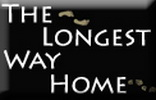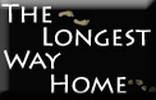Malaysia
» Malaysia as a tourist destination?
» FAQ's on Malaysia
West Malaysia also known as Peninsular Malaysia is quite different from either Sabah or Sarawak and that's a good thing. Diversity is what first stuck me about west Malaysia. Culturally & ethnically this part of Malaysia is fascinating. Not only that, but there's a lot to do in Malaysia that many people don't know about
Places to visit in Malaysia
Peninsular Malaysia, a land of captivating beauty and rich cultural heritage, beckons travelers with its harmonious blend of landscapes and treasures. From the majestic peaks of the Titiwangsa Mountains to the UNESCO-listed Melaka historical city, Peninsular Malaysia offers an unforgettable journey through a panorama of experiences.
Embark on an exhilarating adventure through the verdant landscapes of Peninsular Malaysia, where you can explore the iconic Batu Caves, a Hindu pilgrimage site, and trek through the lush rainforests of Taman Negara National Park, home to diverse flora and fauna.
Venture into the heart of Peninsular Malaysia's vibrant cities, including Kuala Lumpur, the bustling capital, and Melaka,
a town renowned for its colonial architecture and Peranakan culture.
Immerse yourself in the vibrant atmosphere of bustling markets, towering skyscrapers, and mouthwatering cuisine.
Indulge in the tantalizing flavors of Malaysia's diverse cuisine, a symphony of spices and textures that will tantalize your taste buds. From the hearty nasi lemak, a fragrant rice dish with sambal, to the delicate flavors of asam laksa, a sour and spicy noodle soup, Malaysia's cuisine offers a culinary adventure for every palate.
Whether you're seeking adventure, relaxation, or cultural immersion, Peninsular Malaysia promises an unforgettable journey that will leave you captivated and craving more. Embrace the warmth and hospitality of the Malaysian people, experience the wonders of this diverse land, and discover why Peninsular Malaysia is truly a land of a thousand charms.
A place to live? Saya suka Malaysia dalam pelbagai peringkat. Seseorang boleh tinggal di sana, tetapi saya dapati sedikit isu kaum di sana yang akan membuatkan saya teragak-agak.
Kuala Lumpur
The capital of Malaysia, relatively clean, quite easy to get around with a huge culturally diverse population.

The city
- My first impression of Kuala Lumpur was the huge culturally diverse population that resides there. Malay's, Indian and Chinese make up most of the population. But Indonesians, Filipinos, Africans, and a host of other people have all settled into this big city.
As a tourist destination, Kuala Lumpur is lacking an all star attraction. But, it is trying. If visiting the city alone, then opt for the cultural side of things rather than lots of attractions
Chinatown
A district in Kuala Lumpur filled with old Chinese shops, restaurants, markets and buildings. A busy place, that's larger than you might first think.Little India
Another small district in Kuala Lumpur that's got a strong Indian community. Well worth a walk along to soak up the rich Indian atmosphere, not to mention some great food.Petronas Towers
Kuala Lumpur's most icon building. Take a tour up to the half way point, or easily spend half a day shopping in huge mall below. Take a look at some photographs and an article I've written about shopping in Petronas Towers & security at Petronas TowersNational Mosque
A slightly futuristic design makes this mosque a worthwhile visit. Wear long pants, shirts unless you want to be given a robe to wear.Jame Mosque
Right beside Jame Mosque LRT it's KL's oldest mosque, and possibly nicest looking. Again, wear appropriate attire if visiting.KL Bird Park
Looking for something to do in KL? A visit to the bird park is a great place to take close up's of some of Malaysia great bird life.KL Butterfly farm
Not really worth the journey alone, unless you really like butterflies. But, there are some great species on show here.Kuala Lumpur Railway Station
A nice piece of Islamic architecture to view. Though the official office building opposite it is not open to the public inside.Kuala Lumpur Tower
Measuring 421 m (1,381 ft) the KL tower offers views over the city (entry fee). Really only worth it if the weather is clear.Central Market
AAn old building that's been renovated purely for tourism. Outside there is a fan cooled covered walkway with various food and souvenir stalls. While inside the market building are a host of restaurants and a mass of more souvenir shops. A good place to go if you need to quickly buy souvenirs to take home.Batu Caves:
A short bus ride from the capital offers you some great historical caves and giant statues.
How to get to Batu Caves
Take bus 11/11d from Bangkok Bank Terminus. Close to Central Market. More details available on my blog post about Batu caves.
Murugan statue
The worlds tallest statue of the Hindu deity Murugan. Standing at ( 42.7m/(140.09 feet ) in front of the caves the golden statue is quite impressive.
Batu caves
272 numbered concrete steps lead to the main Temple known as Cathedral Cave. Inside the caves are several statues and temples of worship. Bring a tripod if you want non blurry photos as it can be a little dark.
Note:
Beware of the monkeys that sit around the outside to Batu caves as they can grab at you, or your possessions.
Malacca
Also known as Malaka, a small pretty town in the south of west Malaysia.
The Town
It's a small town, easy to walk, with quite a lot to see.
Dutch Square / Clock Tower
Built in 1886, the clock tower occupied what is essentially the town center of Malacca.
Cheng Hoon Teng Temple
The oldest Chinese temple in Malaysia.
Porta de Santiago / A Famosa
One of the oldest Portuguese settlements in Malaysia. What remains of the fort today is mainly from Dutch reconstruction.
Residential houses in Old Malacca
Across the river is a series of Malacca's old housing. Nestled between wonderful winding streets they display a mix of Malay, Islamic and Chinese architecture.
Old Portuguese boat
There's a replica Portuguese trading boat beside the river that has a mini museum inside. It's worth the visit, especially for children.
Old Colorful rickshaw rides
Parked in Dutch square are a host of cycle rickshaws that have been brightly colored and covered in plastic flowers with loudspeakers blaring out music. Taking a town tour on one is said to be quite fun!
Information on getting to Malacca
Cameron Highlands:
Set in the in the midrange of west Malaysia this area has a refreshingly cool climate and makes for a great getaway.
Tanah Rata town - Though there are several small towns around the Cameron Highlands Tanah Rata is a popular one for individuals and tours.
Tea plantations - Don't leave the Cameron Highlands without visiting at least one tea plantation. The landscape is beautiful and filled with different shades green tea leaves forming what looks like green sea waves.
Rafflesia Flower -The world's largest flower is often in bloom here.
Jungle trek - More of a forest trek than dense jungle. A half day walk, or full day tour can be easily arranged. Though be warned it rains a lot in the highlands!
Rose garden - Better than it might sound. A flower garden set on mountain, with plenty of ... well, flowers!
Bee farm - Not exactly good, but if you've never visited one, it might be worth it..
Strawberry farm - More of shop than a farm, though there is one. Good for having a cold strawberry milkshake. The dried strawberries are not bad either!
Surrounding forest - A lot of the surrounding forest land is accessible on foot, or bicycle for free. Bring rain gear though as it does rain a lot.
Check out my article on what tours are available and how to choose a tour in The Cameron highlands
Penang:
Island of the west coast of West Malaysia with old post war buildings, beaches, the largest Buddhist temple in Asia and possibly the best food in the world.
Georgetown - Capital of Penang filled with lovely old post war buildings and streets. Listed as a UNESCO heritage site, it still remains as a charming town that never seems over run with tourists.
War Museum - Set atop a hill is a unique and one of the world's largest open air war museums. With a dark past, today it's open to the public and quite an interesting place to visit for all the family.
Kek Lok Si / Temple of Supreme Bliss - South East Asia's largest Buddhist temple is a sight to behold and well worth a visit. The structure is set a top of a hill and spans over several easy to visit sections. Including temple of the 10,000 Buddha's, and the giant 36.5m (feet) high statue of Kuan Yin, the Goddess of Mercy.
Fort Cornwallis - First build in 1786 by the British under Captain Francis Light this is a well preserved historical site. Included in Fort Cornwallis is a small light house, ramparts, several old cannon and various historic artifacts.
Butterworth - Across the one of the world's longest bridges, or a short ferry ride lies Butterworth. Rail and bus networks link Penang to the rest of Malaysia, and Thailand.
Batu Ferringhi - A popular beach area in Penang. The beaches here are not quite as exotic as some of Malaysia's east coast ones but for a dip in the sea they are nice. For more secluded beaches in Penang try Teluk Kampi, Muka Head, and Pantai Kerachut.
Snake Temple & Hindu Temple - Built in 1850 in memory of the Chinese monk Chor Soo Kong, upon completion local snakes then moved into this temple. Also worth a visit is the Hindu temple just down the road, filled with many Hindu deity statues.
Bukit Jambul Orchid & Reptile Garden - A pleasant place to spend a morning or afternoon is you have little else to do, or have a particular liking for flowers and reptiles.
Bukit Bendera / Penang Hill - If you are looking for the best view of George town, the long bridge and Butterworth from above, Penang Hill is the place to go. There's an old cable car that will take you up the hillside from where you can walk to the top of the hill from. Try to pick a blue sky day to make this trip for the best views at sunset.
Kuala Lumpur is a major international air hub. Flights from nearly all corners of the globe have routes here.
Post pandemic West Malaysia has opened its borders once again for all vaccinated travellers. Do please check with your nearest embassy.
By sea there are routes from Malacca to Sumatra (Indonesia) for other sea links to Malaysia please sea my travel guide to Sabah.
| Try my custom flight search for the lowest priced flights to and from Malaysia!
|
Overland routes are very accessible from Singapore by train, bus or car. Many companies offer buses from most of Malaysia's southern towns directly to Singapore.
There is a famous train route linking Bangkok, through Malaysia all the way to Singapore. Likewise there are many bus routes linking South Thailand to Malaysia with relatively straight forward border crossings.
There's more here about my personal experience taking the train from Kuala Lumpur to Singapore and back.
The Food
Malaysia is famous for its vast variety of great food. Malay, Indian Chinese and Western foods are all available throughout Peninsular Malaysia.
Eating is a near on national pastime in Malaysia, and Malaysian's take their food seriously. Critiquing it will get you some distasteful looks from locals.
Through out all of Malaysia I have to give the nod to Sabah (Malaysian Borneo) for having the best regional food. That said, Peninsular Malaysia have a read of my food discoveries here, including: the best tandoori chicken in the world Banana leaf rice.
The capital of great food in West Malaysia is without a doubt, Georgetown, Penang.


The People in West Malaysia
West Malaysia is far more ethnically diverse than either Sarawak, or Sabah. There is a huge Indian, and Chinese contingent here, along with Malay. Mix in Indonesians, Pakistanis, Filipinos and a dash of other internationals and West Malaysia is easily the most ethnically diverse region in Asia.
One can blend into West Malaysia's big cities very easily. And, tourism seems to bring people into specific towns here more so than in Malaysia's other regions. All this means that it seems harder to intermingle with West Malaysians.
The open friendliness is still very much evident. So is prosperity however, and in the capital, like many others around the world, wealth seems to create a class division.
I found some deep lining troubles to do with multicultural immersion and society far more evident in west Malaysia than in other regions.
All that said, West Malaysians are still amongst the most friendly people in Asia. It is however interesting to see the differences between West, Sarawak, and Sabah Malaysians.
The Language
This is very interesting in terms of trying to learn what language to speak. Many people in Malaysia speak English, so getting around big towns or tourist areas is easy. After that, though they won't fully admit it, things are broken up into cultural areas.
In other words go to Chinatown and it's Chinese that's mainly spoken. Little India and Tamil/English is prevalent. Then add in some Malay and you'll be hard pressed at just finding one dominant language.
I found ordering a black coffee in different areas of Kuala Lumpur to be a linguistic challenge. I needed Tamil in an Indian cafe rather than Hindi. Then Mandarin in Chinese cafes and finally Malay or a mix of Malay and English in Malaysian cafes.
Do's & Do not's
Do watch out for crazy tour prices.
Do be careful of the cheating taxi's, especially in Kuala Lumpur!
Don't forget the shoe removal thing in people's homes.
Don't criticize the food, Malaysians will take offence.
Places to stay
Where I stayed
Kuala Lumpur - I found accommodation in the capital poor in value. Share bathrooms at budget level and basic breakfasts. Budget hotels are also quite low in standards. At mid level things start to even out.
Matahari Lodge - Right in front of Pasar Seni LRT, it's clean, share bathroom, free WIFI. Jalan Hang Kasturi Tel: +603-2031 1300
Explorers Guesthouse and Hostel - Clean but no windows, free WIFI good location. Lot of other options on this street. No 128 & 130 Jalan Tun H.S Lee.
Malacca accommodation - Better value and cleaner than in the capital. Accommodation in Malacca can offer some nice guesthouses.
Jalan Besi - Central to all sights, clean, with free wifi, you can bargain for a room quite well. 14, Jalan Tukang Besi.
Cameron Highlands accommodation - There are many options here. Tour operators dominate. Be prepared to be left off at "certain" guesthouses.
Kangs Travellers Lodge - Probably the most popular option in Tanah Rata. Privates, dorms, with free Wi-Fi, no restaurant.
Hidden guesthouses - Behind black & white buildings on the main street are a row of guesthouses. Some good, some not. But, it's very easy to walk next door to look at another and get a good bargain ;)
Penang accommodation -There are a lot of options in Penang, from super budget, very nice colonial style hotels.
Old Penang Guesthouse - Well run good looking guesthouse, with shared bathrooms and free Wi-Fi. Unfortunately they have a shoe removal policy. 53 :Love Lane
Red Inn - Quite clean, cheap, nicely decorated. 55 Love Lane
Love Lane Inn - Backpackers place, rough around the edges, one night only type of place. 54 Love Lane
Where to find cheap but good accommodation in Georgetown - walk down Chulia Street and you will find a lot. Just be sure to see the room first.
Try my custom search for the lowest priced hotels in Malaysia!
Prefer local
accommodation?
Try Airbnb (get up to USD $40 discount)
Potential for home?
Malaysia was one of the few destinations in South East Asia I had in mind. First you have to split Malaysia into three due to Sarawak, and Sabah being in different regions.
Peninsular Malaysia has a hugely diverse population. Immigration here for work, education, and relocation is very common. So you'd think it would be easy to move here. And it is, if you have money.
Yes, West Malaysia is that in that strange position whereby poor immigrants with many family connections take the vast majority of work, while the richer educated locally born people take the rest of the positions.
If you are a foreigner, you can take advantage of the "second home" visa Malaysia offers. Sadly you need a heft amount of retirement money to do this. Working here is possible in the volunteer sector, but there are strict rules beneath the surface of a one or two year internship.
And, it's these rules that make me anxious about West Malaysia. There are human rights issues here that even the locals have a hard time deciphering and understanding. It's complicated, possibly for a reason.
All things being said, West Malaysia does offer a step above many other counties in South East Asia in terms of relocation. One must however, have the connections to break in.
FAQ's about traveling in Malaysia
How much is a daily budget for traveling West Malaysia?
This varies across the country with food being the only consistent price.
Single rooms start for as low as at USD$6 with shared bathroom in the north. Dorms are less.
In larger cities privates with en suite start at around $23. While in the capital basic rooms with a shared bathroom start at $12.
Transport is a little costly, and will add to your daily budget. KL's taxi mafia are hard to bargain with. Ask you hotel for a recommend taxi man, and take his number. I found Mohamed B to be very honest - tel: (+60) 016-309 8338 or (+60) 010 - 546 8338
A local meal can be as little as $1.50. $2-3 for decent sized one with drink. $5 for western.
$18-25 will get your through the day, not visiting anywhere that's not free, eating well with a private room shared bathroom.
Add on 1/3 for transportation around a town. And, add on a lot more if you take tours.
The above is based on a low budget, you can spend a lot more per day depending on your needs.
How to save money in West Malaysia?
Package tours: Do not buy an expensive package tour from overseas unless you have the money to waste or no time to spare. Most travel agents inside Malaysia are cheaper. Independent travel is also cheaper. If you are short on time, ask your hotel to book you into a climb or a tour.
I've met people traveling on tours paying $1000's for what costs independent travel low end $100's.
Flights: AirAsia if booked ahead can offer you cheap flights within Malaysia.
Bargain: Room bargaining doesn't really work here, though off peak might for long stays. Fixed price menu's stay that way. But in markets, it's a bargaining place.
Eating: Food is cheap. But eating at hawker stalls can be even cheaper. Steer clear of the tourist streets serving "just" tourists. Simply walk up the road and you'll get equally good food for half the price.
Transport: Go public, and use the bus systems.
What are the Banks/ATM's like in West Malaysia?
Nearly all of West Malaysia has ATM's. There are also several international banks. Debit, Visa and MasterCard all accepted with ease.
What is the best SIM card in Malaysia for mobile internet?
I used Celcom for most of my time in Malaysia for internet access. I bought my card from a local store and chose an old number. New numbers or easy to remember numbers are more expensive.
I then went to the Celcom main office. Better to go to a main office, than random mall store as they will charge foreigners more. At the main office I signed up for Mobile internet. Then I topped up the card, and paid RM18 for one week (1GB) of internet access. More details on Celcom
The other mobile internet provider people have had success with is Digi. Purchase a pack for RM5 or 8. Hit *126# to subscribe to daily (RM 3) or weekly (RM 15). More details from Digi.
What guide book?
I have not found a likeable guide book to West Malaysia. Many speak of the regional names as if we all should know them off by heart. Personally I found Wikitravel to be good for traveling West Malaysia.
Is West Malaysia full of backpackers?
Not really. Kuala Lumpur has a mix of mid age, older and young travelers. But I can't say I found the rest of Malaysia the same. I mainly found people interested in cultural travel here than party travel.
Tourist Visas in Malaysia?
Most countries will get an on arrival visa for 90 days. An onward ticket is needed. Sabah has a different visa than Sarawak, or Peninsular Malaysia. All of which have Visa on Arrival.
Do note that in 2010 Malaysia stopped Visa on Arrival for work visas for many countries. Tourists seeking 90 visas have no problems, and still get the regular visa on arrival.
If you are thinking of relocating to Malaysia, and have a financial nest egg, you might find the official government second home in Malaysia incentive interesting.

Check out my Malaysia travel blog for a lot more!
Was this page helpful to you? If so please tell others!

























